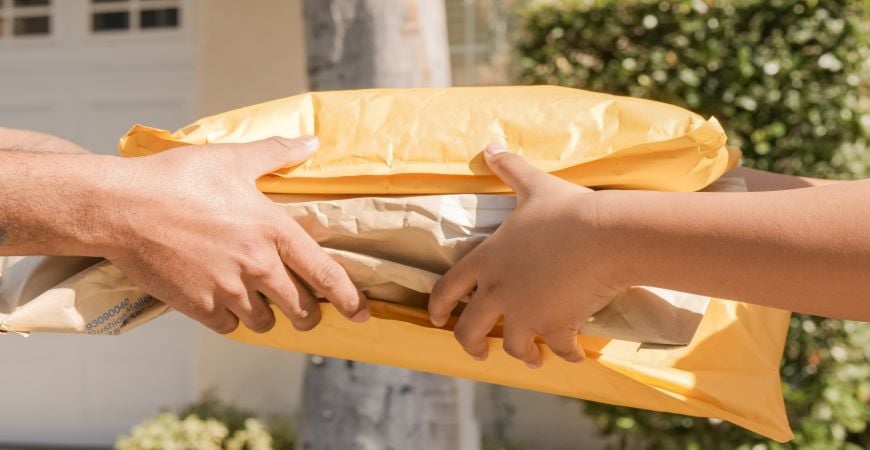This website uses cookies so that we can provide you with the best user experience possible. Cookie information is stored in your browser and performs functions such as recognising you when you return to our website and helping our team to understand which sections of the website you find most interesting and useful.
Make online shopping ever-green this Christmas

Many online Christmas deliveries will be over packaged this year – can suppliers give consumers the green, circular packaging they want?
Online shopping has become essential during the pandemic, and as physical restrictions emerge again in the run up to festivities, consumers are likely to turn to online shops once more for gifts and supplies.
Over the last two years, the number of online shoppers across the EU has risen by 6% to an average of 73%, with penetration of 80% in Belgium, 70% in Spain, and around 60% in Italy and Portugal. Figures from the UK, Europe’s online shopping capital, show that online shopping before Christmas 2020 was 56.2% higher than
the previous year.
Environmental impact of online shopping
However the convenience of buying anytime from anywhere in the world has consequences for the environment, even at Christmas. It can encourage overconsumption and waste and increase transport emissions with multiple vehicles on the roads making next day deliveries.
The large online marketplace platform hubs have also been accused of destroying perfectly good unsold or returned goods. According to insiders’ reports, it’s cheaper for vendors to destroy their unsold or returned stock rather than continue to pay for storage in warehouses. This summer saw protests at distribution centres which resumed again on ‘Black Friday’ aiming to “draw attention to such exploitative and environmentally destructive business practices”. These issues problems may be hidden from consumers, some problems are much more obvious.
Excessive packaging is waste
One of the most visible and frustrating environmental impacts of online shopping is excessive, single-use, one-way packaging. It is adding to the estimated 86 million tons of plastic packaging produced each year across the world (of which less than 14% is actually recycled.)
No organization has quantified exactly how much additional packaging is being used due to e-commerce, or the net impact on the environment. However, with consumer deliveries set to make up a quarter of all global retail in
the next 3 years, and with Amazon alone dispatching more than 10
billion packages each year – it’s not hard to imagine the amount of packaging
in use.
Overpackaging creates a major waste disposal problem, particularly as online deliveries are often packaged in multiple layers of plastic, paper or foam that can be really difficult to separate and recycle. Euroconsumers’ member organization OCU carried out a comparative study of 16 e-commerce platforms available to consumers in Spain to see which had the most efficient packaging options for two contrasting products – a USB stick and a frying pan. They analyzed the weight, volume and type of packaging material and found most packages were too large and contained too much unnecessary plastic packaging.
One pan was delivered in a box that was six times larger than the pan itself, while another was overpacked with multiple types of plastic, some of which were recyclable, some not.
How can businesses reduce packaging?
A greener and more circular packaging system will help preserve ecosystems and resources, and make it easier for consumers to return goods. With the 1994 Packaging Directive up for review soon, we can expect new rules on packaging in EU markets. OCU’s recommendations for improving packaging will help suppliers meet consumers’ expectations and get ahead of the upcoming regulations:
- Use ‘two-way’ or returnable packaging
- Adjust packaging sizes to reduce material consumption, lower weight and make more space when transporting goods.
- Eliminate unnecessary fillers, only fill and pad out fragile products
- Use renewable and recyclable materials in packaging: use less plastics or blends with plastics that are not recyclable, use more paper, lightweight cardboard or compostable plastic packaging.
- Online platforms can suggest the most sustainable packaging and delivery options.
Other ideas to help minimize the impact of deliveries include delivery companies grouping together orders for the same destination to avoid unnecessary journeys and emissions, and using low-polluting vehicles. Consumers could group all their orders together to save unnecessary journeys and only use urgent delivery options if absolutely necessary so routes can be planned more efficiently.
As with all actions needs to improve circularity and reduce resource use, reducing packaging relies on all stakeholders to play their part whether that’s designing new packaging solutions, streamlining materials or using bulk orders. In this way we can make sure that online shopping that happens today is Approved by Tomorrow.


